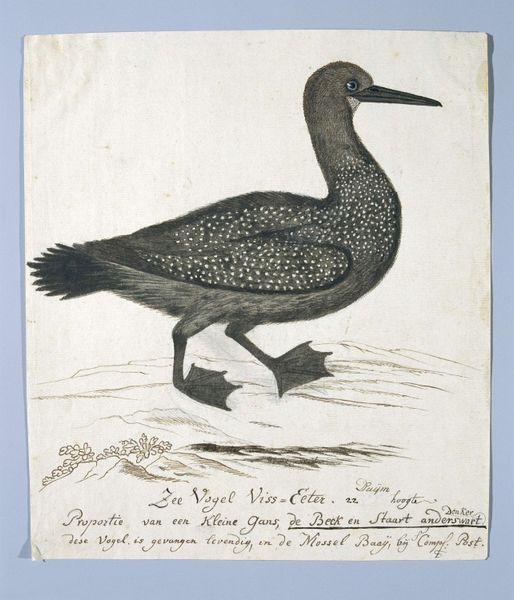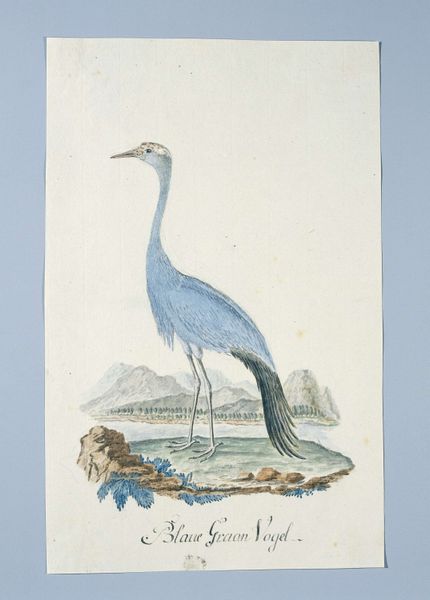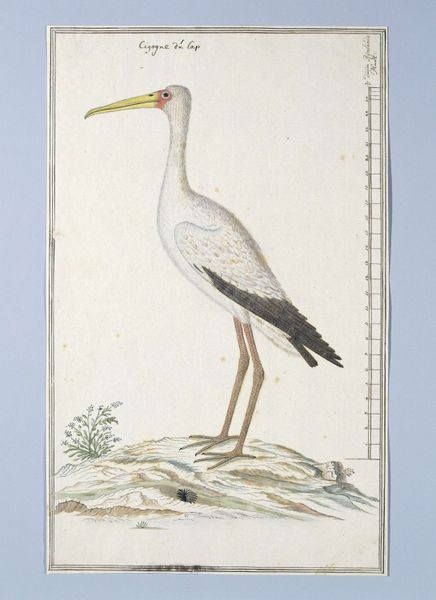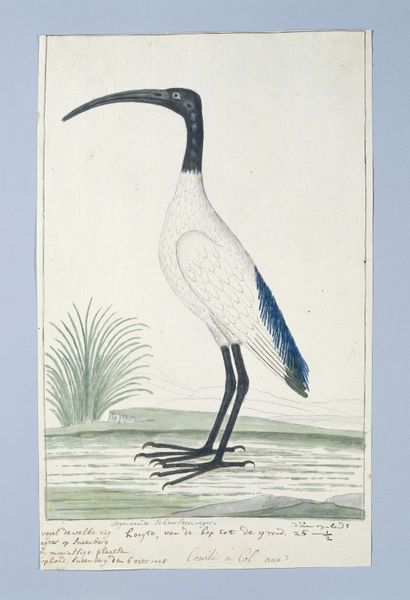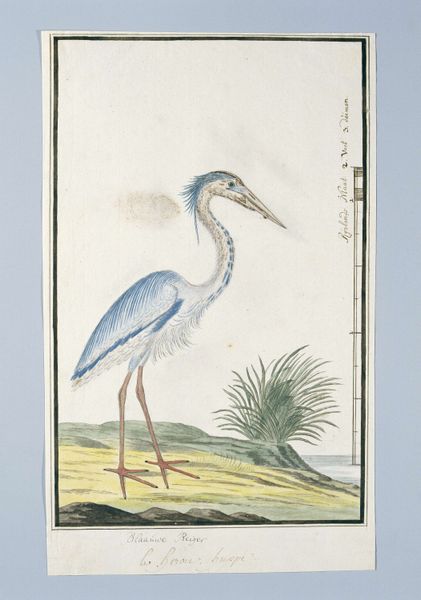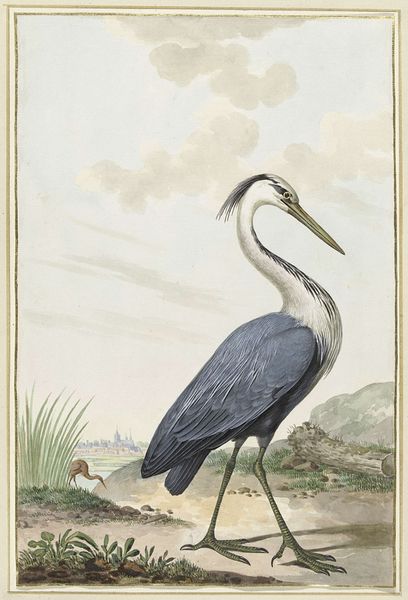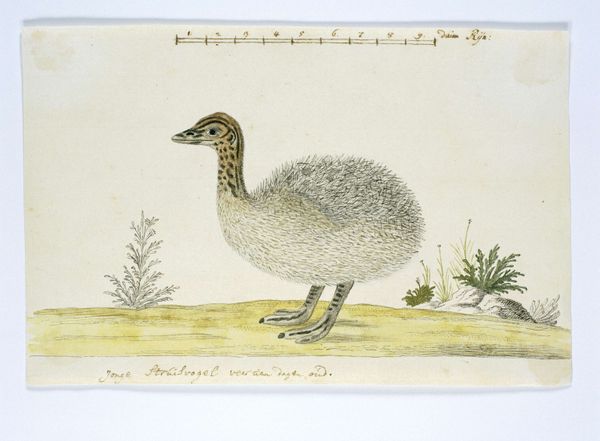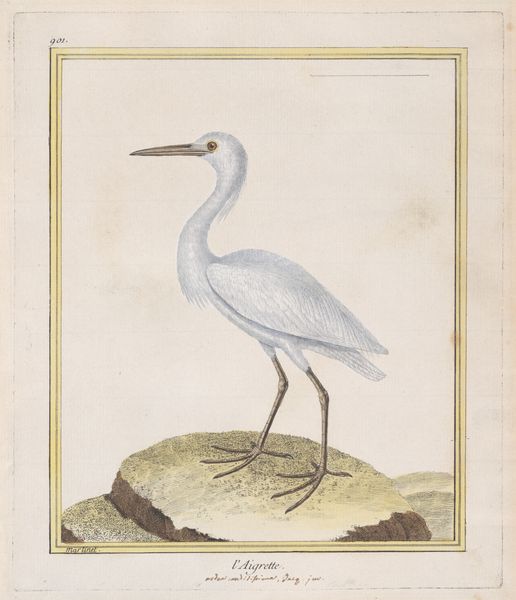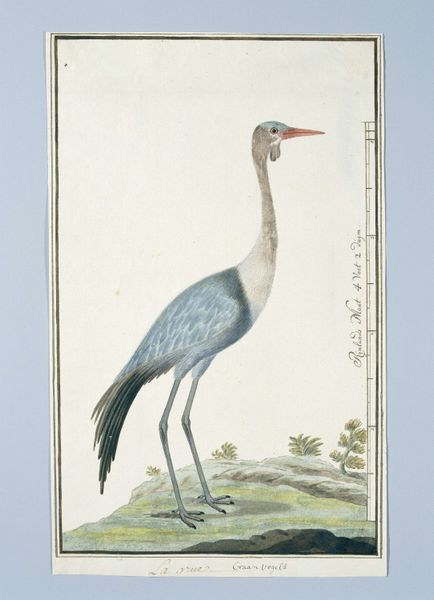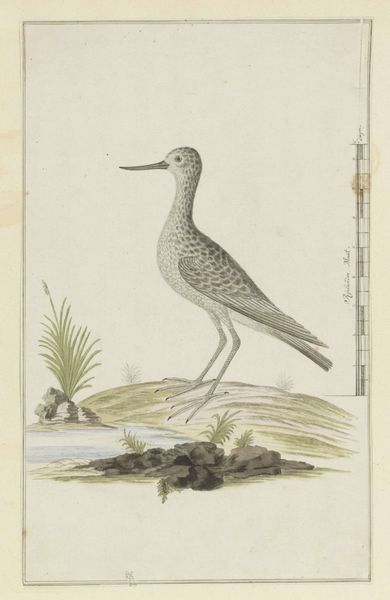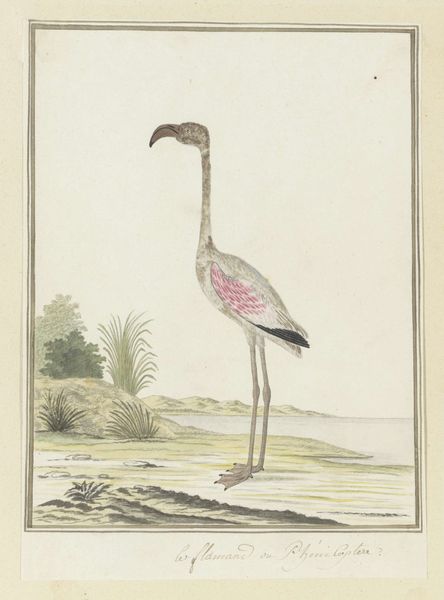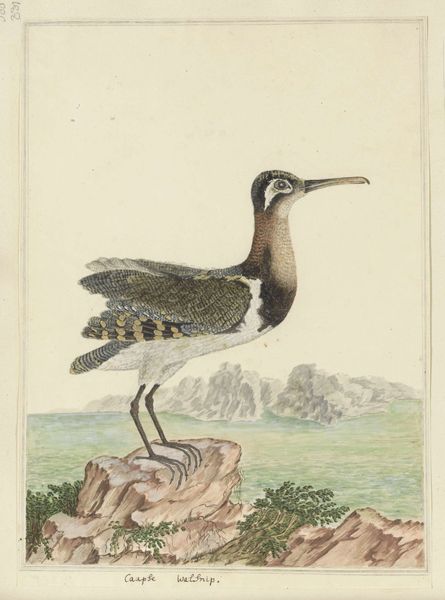
drawing, watercolor
#
portrait
#
drawing
#
aged paper
#
toned paper
#
water colours
#
pastel soft colours
#
personal sketchbook
#
watercolor
#
coloured pencil
#
watercolour bleed
#
watercolour illustration
#
naturalism
#
sketchbook art
#
watercolor
Dimensions: height 660 mm, width 480 mm, height 402 mm, width 305 mm, height 315 mm, width 283 mm
Copyright: Rijks Museum: Open Domain
Curator: Here we have "Pelecanus rufescens", or Pink-backed Pelican, attributed to Robert Jacob Gordon, likely created between 1777 and 1786. The artwork combines watercolor, colored pencil, and other drawing techniques on what appears to be toned paper. Editor: It's rather beautiful, really. There's a gentle quality to it. The pelican seems so serene, almost contemplative, standing on its little green mound. It makes you wonder what it’s thinking. Curator: I find the use of line and color particularly striking. Note how Gordon uses delicate washes of watercolor to define the form of the bird, giving it a subtle sense of volume. And the linear details, created with colored pencil, add a layer of precision and texture. It is naturalism at its best. Editor: Precisely, it has an aura of authenticity. A snapshot of nature carefully captured. The composition is deceptively simple; the subject is almost centrally placed, yet the asymmetry introduced by the grasses and the horizon line keeps it visually interesting. I imagine Gordon standing by a river somewhere, patiently sketching, trying to capture the soul of this bird. Curator: I'm intrigued by the scientific notations inscribed at the lower-right, along the edge of the sheet. It reveals that the goal of this illustration moves beyond aesthetic pleasure: it represents part of a broader effort to document and classify the natural world. Editor: And yet, despite that detached aim of documenting and classifying nature, I am mostly struck by the emotional depth, the artist’s care for the subject. The colors feel honest and quiet, it's very sensitively done. Curator: Agreed. It's a fascinating piece because it straddles the line between scientific observation and artistic expression. It reminds us that even the most objective endeavors are often tinged with subjectivity. Editor: Absolutely, which is what makes art so enduring, wouldn’t you agree? It can take you places beyond observation, and scientific reason; a shared, imagined landscape open for reflection.
Comments
No comments
Be the first to comment and join the conversation on the ultimate creative platform.
